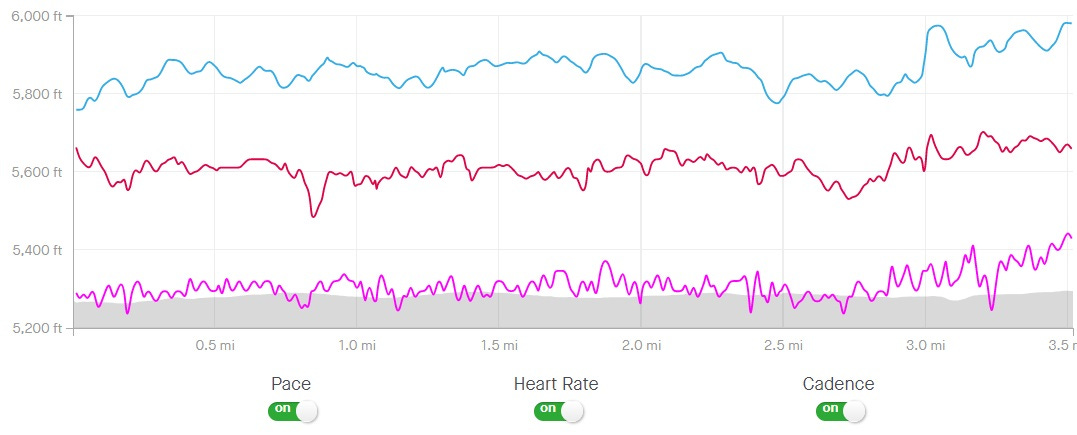Stacking handicaps
With still-climbing prices at least 20 percent higher than last year, I've found a way to fake-compensate
I recently wrote about how being 52 makes 7 equivalent to 6, even though not even a high-ranking Mensa official could possibly find a logical connection between those three numbers. Since I spend virtually all of my time at around 5,300’ elevation, any run I do for longer than 20 or 20 minutes takes about 3 to 3.6 percent more effort than it would at sea level. Call it three and a third percent.
This means that, even if I were as race-fit as my younger, low-altitude-dwelling self, any run I do in Boulder these days—be it a race or an easy run—should be about 20 percent slower than in my c. 2001-2004 salad days (when I ate almost no greens). Since I don’t race or do any workouts of substance anymore, I don’t really bother accounting for the fullness of these insuperable impediments on the rare occasions I time myself doing anything.
Last night I timed the last 25 minutes or so of a 45-minute dogless run on the flat residential streets of East Boulder. I didn’t consciously pick it up until I reached the tunnel under the Foothills Parkway around a half-mile from home, which always behaves like a slingshot, and even then, the increase in effort pick-up wasn’t extreme, just noticeable. I’m guessing that I averaged around 7:30 pace in the 20 or so minutes before deciding to engage the function on my watch that most runners consider indispensable

If I knock 20 percent off my average pace of 7:06 for that segment, I get 5:55 pace (so do many other mathematicians). I could have done a pick-up at that pace easily at the end of an everyday run when I was in my prime, but I would have noticed it zs an outlier a lot more than I did last night. And I am not training nearly as hard now as I was when I was hitting my personal bests; if I had done nothing but run 55 or 60 miles a week of base mileage in my 20s and 30s, I can’t see how I ever would have run under 16:00 for 5K. (My fastest ever was 14:58.2, though my 15:16 in Golden Gate Park at around the same time probably represented a better effort.)
When I took a VO2 Max test at age 34, days before that 14:58, my maximum heart rate turned out to be 187. So, at least at the time, I was one of those rare specimens for whom the (220 minus age) formula for estimating maximum heart rate was actually applicable, albeit with a bonus beat. I don’t know what my maximum heart rate is now, but if it’s around 160 (and I think it’s higher than that) then clicking along at 140 beats a minute means getting close to tempo-run territory.
The upshot, now that I am running without Rosie more often than not and therefore running faster, is that if I were racing or just doing regular hard workouts right now, I would have to slow down my recovery runs. I’m in what I think is a typical mindset for older fuckers—”Yeah, I obviously have to concede the sub-5:00-per-mile race times, but I can still call 7:00 to 7:30 pace ‘easy,’ just because.” Sure, on any given day and at any given moment 7:00 pace on level ground is not challenging, but running this fast would be a poor way to consistently proceed between, say, a 15-miler on Sunday and a Wednesday track session.
Avoiding Sunday long runs and excessively heavy breathing on Wednesdays is one way to keep doing whatever I feel like and not pay any noticeable price. But while I would have thought that the idea of a fixed and mostly unavoidable loss of 20 percent of my previous capabilities would have proven depressing, it really isn’t. I obviously retain much of the same physical durability I used to have, which was always my greatest asset—not just because I could outwork people, but because this resilience allows your body to buffer a lot of ill-advised training decisions. It’s my mind and spirit having gone to shit that presents the greater impediment to meaningful goal-formation in all things nowadays.


